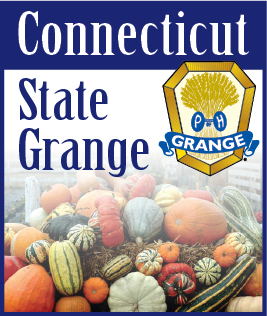| APRIL 19, 2016 -- Europeans first introduced peaches to America in the 17th century and the fruit quickly flourished in the Southern and Mid-Atlantic colonies. Although New England farmers sometimes planted peach trees in their orchards, the long harsh winters and the frequent frosts (extending well into the spring) limited the crop’s success farther north. Through innovation and perseverance, however, fruit grower John Howard Hale eventually developed a new type of peach capable of thriving in harsher climates.
Hale Develops a New Type of Peach
By the 1880s, the Hale farm in South Glastonbury sold a wide variety of fruit plants and trees, including plums, currents, raspberries, blackberries, and grapes, resulting in the sale of bushels of fruits to customers in Hartford. Growing peaches posed a difficult challenge, however, because of the plant’s affinity for warmer weather, but Hale discovered a few hardy trees on his grandfather’s farm and developed a new type of peach that more capably endured the harsh New England climate and produced large delicious fruit. When Hale first offered his peaches for sale in Hartford, the public hailed them as “a beautiful and rare sight in the state.”
In addition to his canny use of advertising, Hale also made use of the latest advances in technology to get his fruit to market. In the 1890s, he used the local trolley line to transport his peaches to Hartford, commissioning three special cars for the purpose. Peaches were notoriously difficult to keep fresh, but Hale discovered that through the use of refrigeration, he actually extended their shelf life. Workers pre-cooled the peaches and then loaded them on to special refrigerator railroad cars containing bunkers filled with ice to keep the fruit cool during transport. By the end of the 19th century, Hale shipped peaches all over the United States, and even to Europe.
The original family farm soon expanded to a huge operation involving 1,200 acres, with orchards in Glastonbury and Seymour, Connecticut, and in Peach County, Georgia. George Hale eventually left Connecticut to run the Georgia orchards, but John Hale remained committed to his home state. Though he had only an elementary school education, he went on to become one of the founders of the University of Connecticut and also served in the Connecticut General Assembly and was second Master of the Connecticut State Grange. He was a member of the Connecticut Public Utilities Commission at the time of his death in 1917.
The peach that Hale developed, known as the J. H. Hale Peach, continues to remain popular, admired for the same qualities that led to Hale’s commercial success at the turn of the 20th century. Today peaches are still grown commercially in orchards in Glastonbury and in other towns throughout Connecticut.
Nancy Finlay grew up in Manchester, Connecticut. She has a BA from Smith College and an MFA and PhD from Princeton University. From 1998 to 2015, she was Curator of Graphics at the CT Historical Society.
Note: J.H. Hale was the 2nd State Master of the CT State Grange, and was a member of Glastonbury Grange. |
